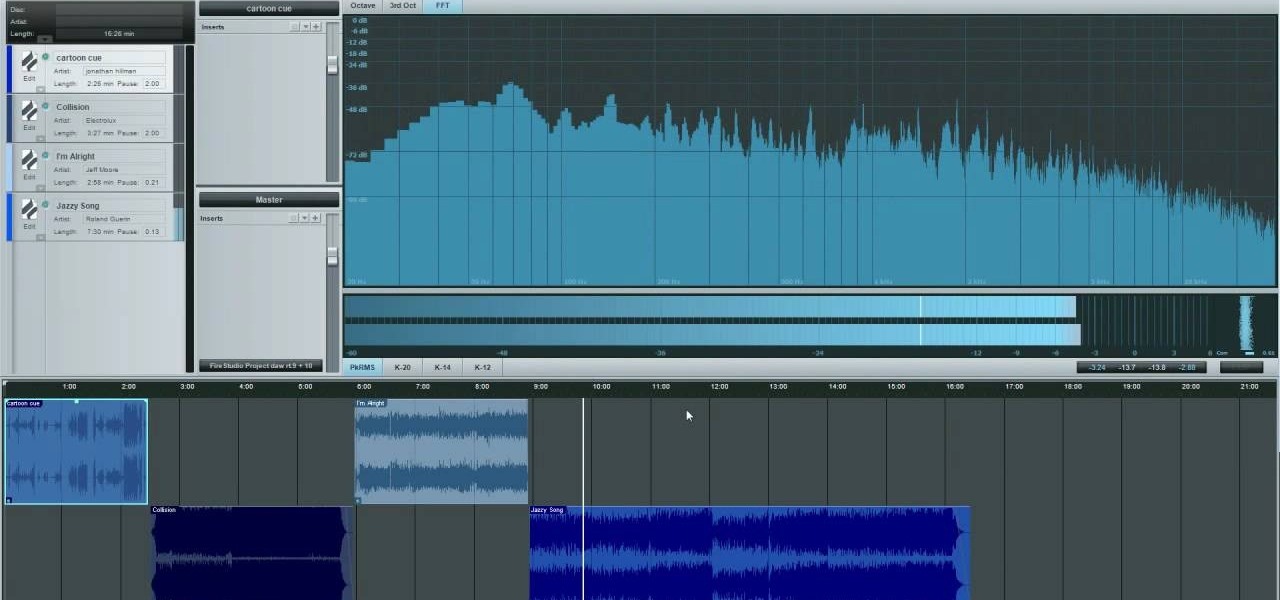

What are we trying to achieve?īy working on the overall sound we should be able to raise the volume, bring out dynamics, even out the harmonic content and hopefully introduce a bit of “punch”. Because of this flexibility I’m inclined to see mastering as less of a separate process but rather an extension of the whole process. If an error appears at the mastering stage we don’t have to try to fix it with some clever compressing, we can actually go back to the original project, adjust the mix or even re-record the track.

In our home studio environment where we are the band/engineer/producer then we can do whatever we want.
#STUDIO ONE MASTERING PRO#
In the pro world, once it’s reached the mastering house the mixing is already complete – the band has gone home, the studio time is over and so the engineer has to work with what he’s given. However, in some ways this is a missed opportunity. It feels like you are progressing and you’re putting your focus not on arranging or comparing levels but on the overall sound and how different tracks sound together on an album. Sometimes when mixing you get so in to your music that you can no longer hear the mistakes or the problems that would be obvious to someone else – always get another listener and remember to try not to be offended by their comments! Having a second stage to working on your music, coming with a fresh approach after you’ve finished your mixes, is also a really good idea. One of the real bits of wisdom from mastering is the idea of getting someone else to listen to your music – someone with a decent “ear” for how things sound. In a nutshell you slave away on your music, getting the most perfect sound you can, the most fabulous mix and then give the mixdown files to someone else who completely changes the character of your sound (hopefully for the better) and beefs up the volume ready for burning to CD. It’s now recognised as a creative post-production process that can incorporate all sorts of equipment and specialist skills. Before too long all sorts of tools were being used to “finish” or “sweeten” the source material. Equipment was introduced to even out the levels between tracks, maybe EQ it a bit appropriate to the format, or compress to flatten an accidental peak.


Mastering grew out of the need to prepare music for its final medium, vinyl, tape CD etc. So, let’s look at the possibilities and advantages of doing it yourself. However, if we followed that logic then we might as well hire session musicians and a posh studio rather than squeak away at it in our bedrooms, attics and sheds.
#STUDIO ONE MASTERING HOW TO#
The benefits are that you’re getting a fresh pair of ears, some fabulous equipment and a bloke who knows how to use it. I’m a great supporter of professionals in any field of creativity, but I’m also a supporter of the guy who’s doing it at home and just wants to make some music and get it out there – and this is what this guide is all about.įirst, the disclaimer – if you want to get your music mastered “properly” then please take it to a mastering house where they will gladly warm up your tunes and relieve you of a load of cash. I’ve read a lot of articles that support the idea that mastering is somehow special, or more professional, the reserve of hardened and wizened mastering engineers with mystical powers of “finishing”.


 0 kommentar(er)
0 kommentar(er)
